- All Posts
- /
- What you need to know about cross-sell emails

What you need to know about cross-sell emails
Messaging and Automation-
 Stephanie Knapp
Stephanie Knapp
-
Updated:Posted:
On this page
Once you’ve acquired a customer and built up the relationship, you open up the opportunity to sell them related items or features.
Today we’re exploring cross-sell emails so that you’ll be ready to forge a new (and profitable) path in your email marketing and automation efforts.
What is a cross-sell email
A cross-sell email is a message that encourages customers to buy complementary products to what they already have, or are about to buy. The most common analogy you’ll come across for cross-selling is: “Would you like fries with that?”
Sometimes, cross-selling gets lumped together with upselling, but they’re actually two distinct strategies.
Here’s how they play out within email.
A cross-sell email, like the one below from Dollar Shave Club, presents inexpensive items that customers can use alongside their main purchase. For a razor, a cross-sell is a shave butter. Cross-sells are portrayed as a smaller commitment, as signaled by the headline “toss more in?”
A cross-sell for a SaaS company could be adding a standalone feature to complement your current suite, or integrating with a third-party tool.
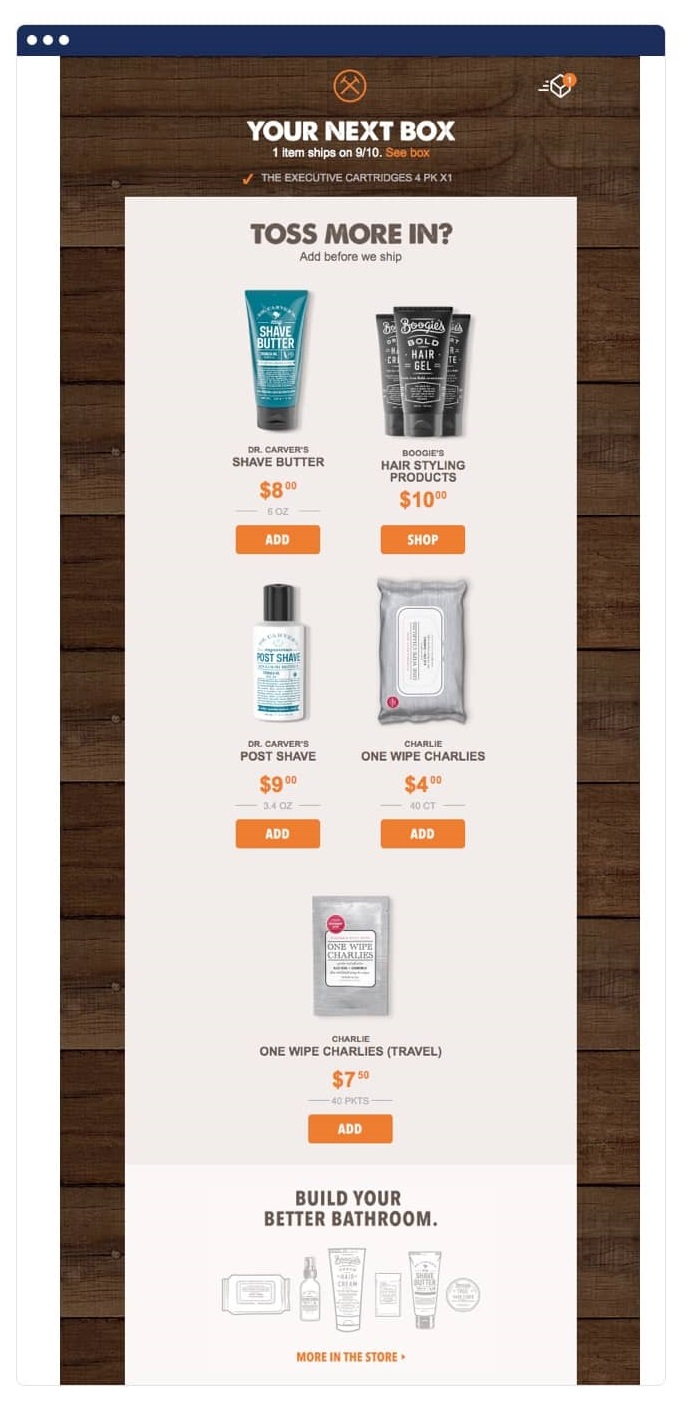
Upsell emails, on the other hand, present an item that’s more expensive than the main purchase. Dollar Shave Club attempts to upsell a customer with a $25 “first-class travel bag,” instead of the $6 shave butter. An upsell for a SaaS company would be upgrading your plan to a higher tier with more features.
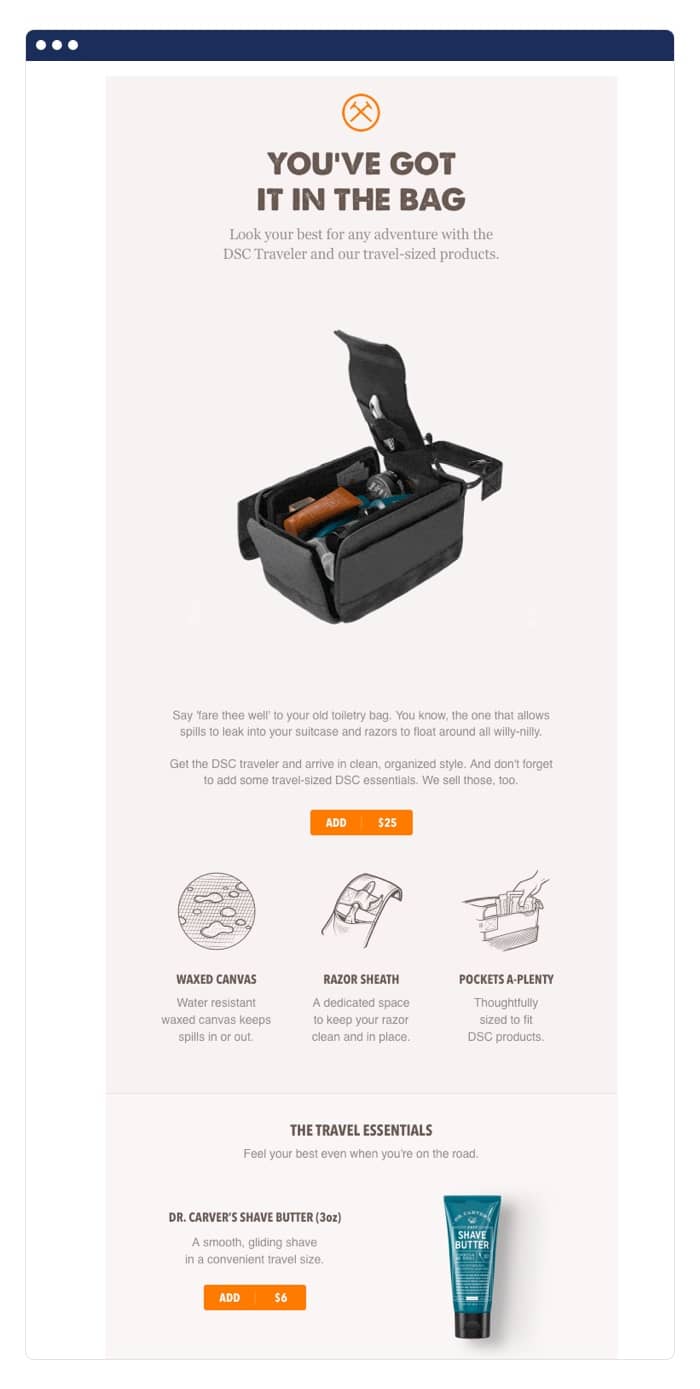
Why you should add cross-selling emails to your lineup
Any scalable marketing tactic that leads to higher sales is an obvious win, so here are three cross-selling email benefits we think you’ll be happy with.
Increase average order value
Adding a single $6 shave butter to a Dollar Shave Club order isn’t going to change the price that a customer pays drastically. However, you need to think about cross-selling at scale. Even a small lift in average order value multiplied by your customer base could represent serious cash flow.
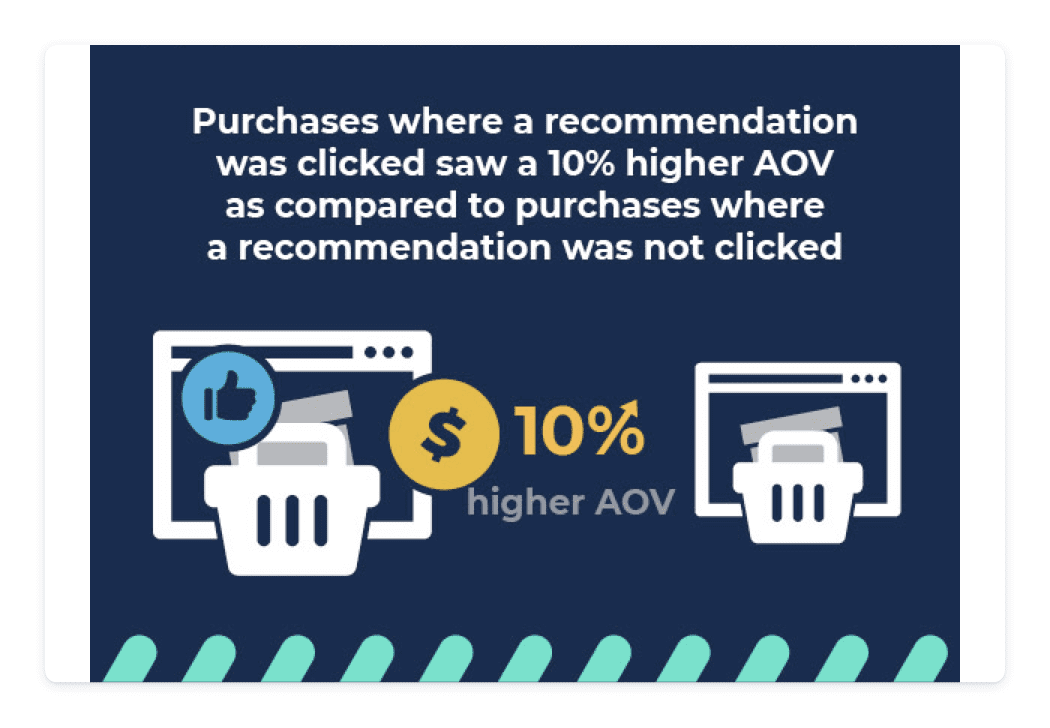
Forrester Research found a 10% higher AOV on purchases where a recommendation was clicked on. While these cross-sell tactics sometimes play out on a company’s website, the potential for a higher AOV is reason to explore it in email, too.
Boost customer lifetime value
A cross-sell isn’t just good for the average order value, but it also increases customer lifetime value over the long run. 49% of customers say they have purchased an item they didn’t intend to initially, because of a personalized recommendation.
If that happens a few times over the customer lifetime, you’re bound to see the boost in revenue and engagement. A higher CLTV also gives you more wiggle room to experiment with your acquisition budget.
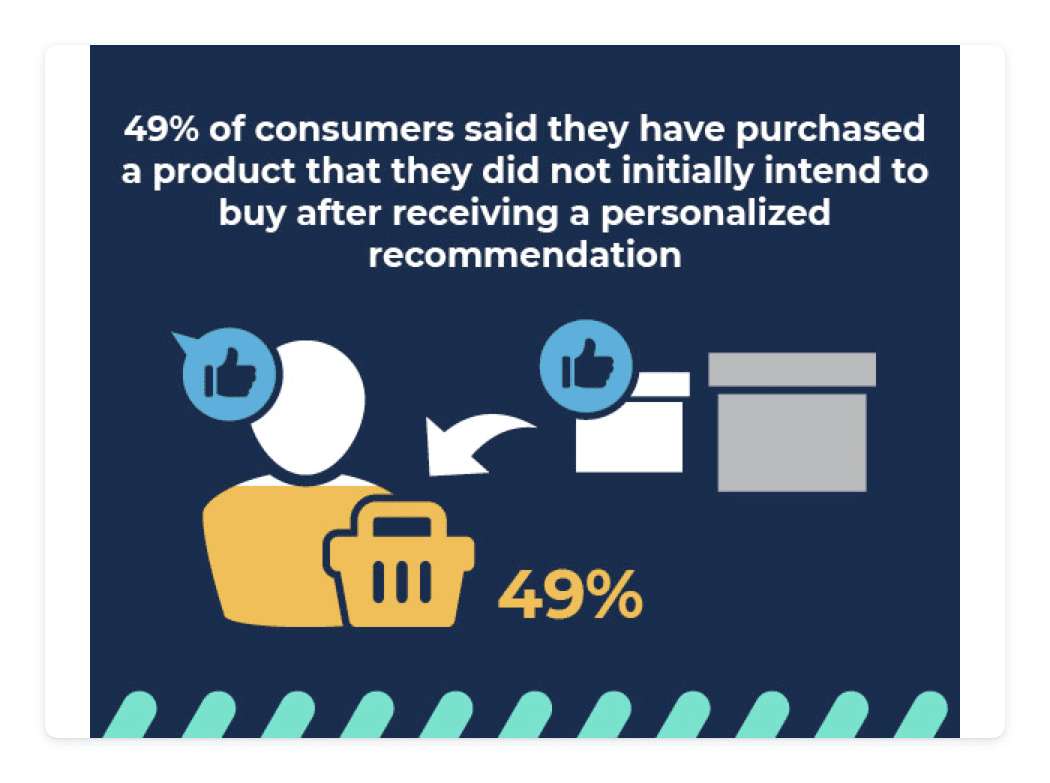
Improve retention with data-driven recommendations
The more value you can add to a customer’s life, the higher the retention rate. By learning which cross-sells perform with each customer segment, you can improve marketing for future customers.
Since 52% of customers would share personal data in exchange for product recommendations, you can use personalization to deliver relevant marketing at scale.
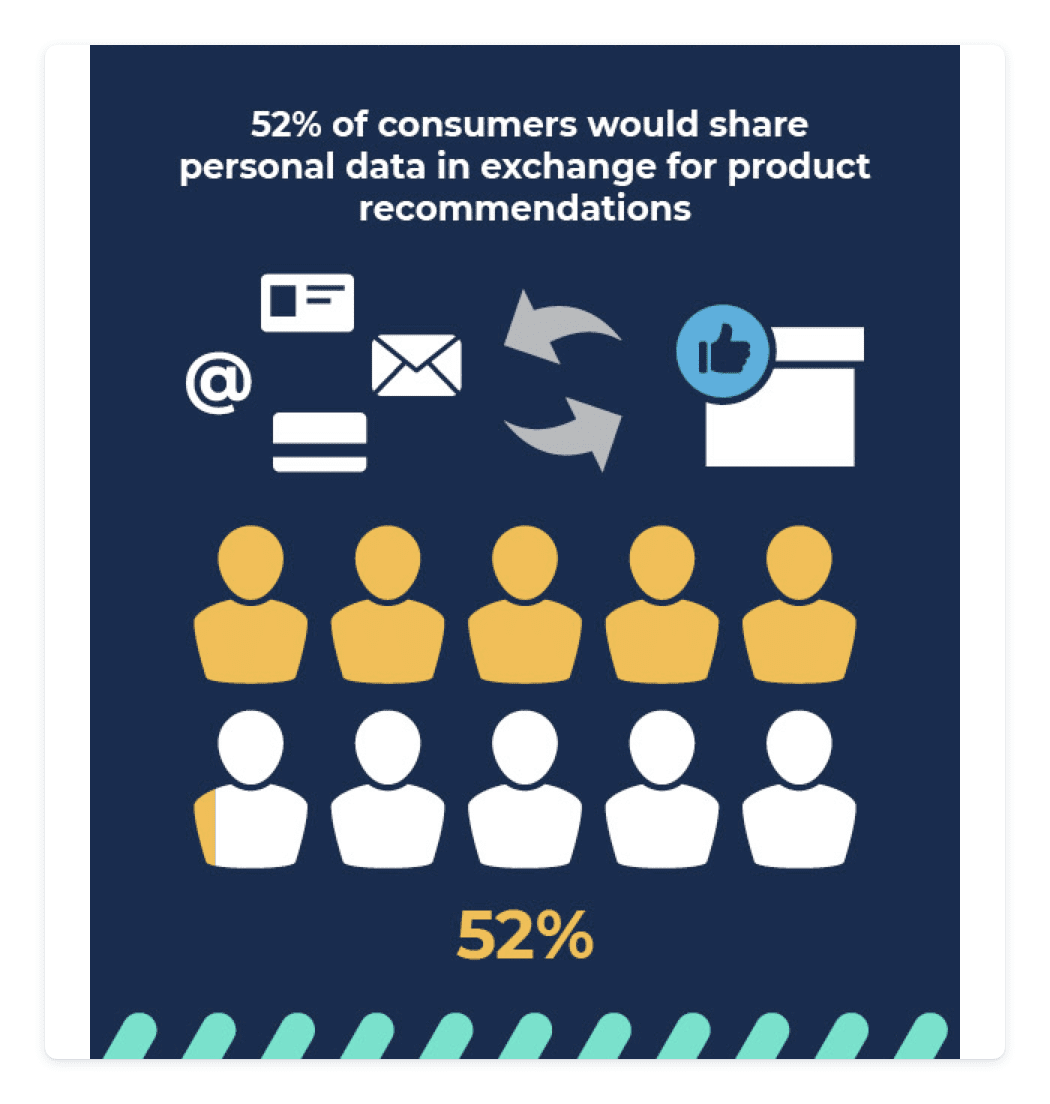
4 cross-sell email examples to learn from
Rather than reinventing the wheel, you can look to what others have done for inspiration. These are four cross-sell email templates to use as guiding lights.
Shopify
Software companies, like Shopify, can cross-sell opportunities that mirror a customer’s growth. For example, a Shopify customer may start selling their goods online, and then grow to fulfill their dream of having a storefront. As the customer progresses on their journey, Shopify helps with their point of sale hardware and app.
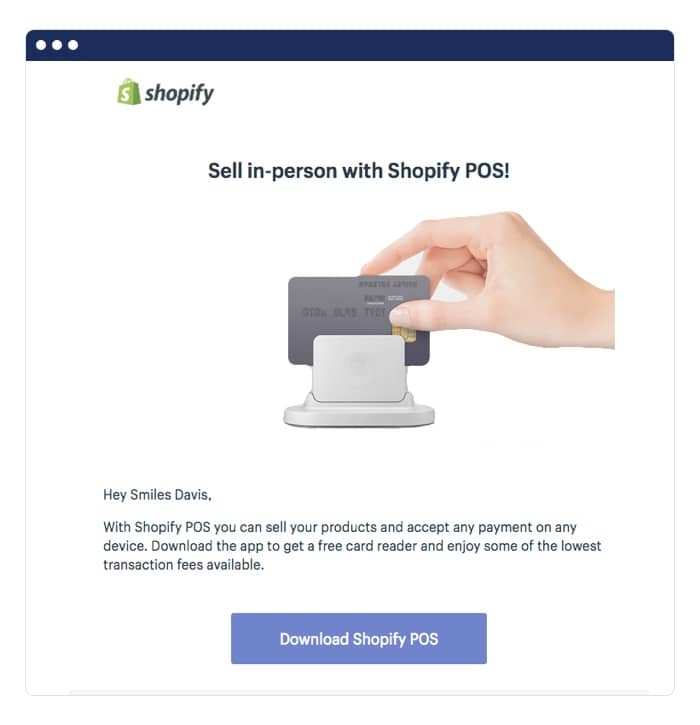
Shopify’s cross-sell email is short and to the point. They catch the target audience’s attention with the subject line “Everything you need to sell in-person.” The body copy then explores why they should care (accept payments on any device) and what to do next (download the app).
Casper
As we’ve mentioned already and will explore below, cross-sells should be less expensive than what a customer has already purchased. In Casper’s case, the perfect cross-sell to their mattress is their “fluffiest pillow yet.”

The email begins with a simple description of the pillow, and then explores details further down, such as sourcing and materials.
Since Casper already positions itself on comfort and high environmental standards, the three key points listed for the pillow will resonate with customers.
Mailchimp
While Mailchimp’s cross-selling is technically free, it’s still a great way to make users more “sticky.” As customers use more and more of your services and build a deeper involvement with your company, they are more likely to stick around.
Therefore, this cross-sell promotion may still boost retention in the long run. In the future, they may run this campaign as a standard cross-sell and offer the custom domain at a price.
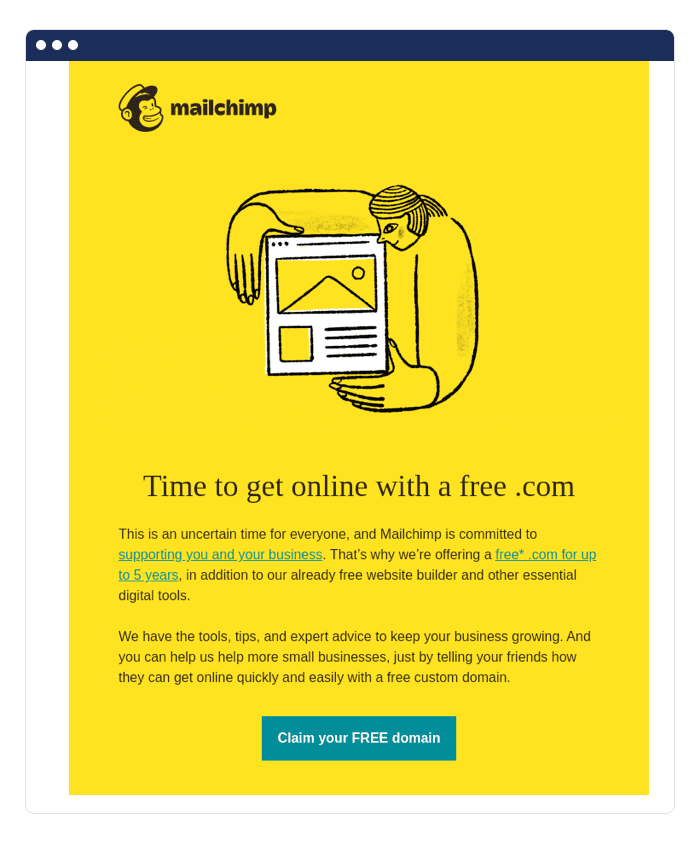
This Mailchimp email is also a bit of a two-for-one, since they ask readers to tell their friends “how they can get online quickly and easily with a free custom domain.” By giving existing customers something for free, they entice them to refer their friends to Mailchimp.
P.S. Want to learn more about referral emails? We’ve got a complete guide here.
Chewy
If you have past orders and behavioral data from customers, you can send personalized emails like Chewy. Based on previous order frequency, Chewy can predict when a customer might be ready for another purchase.
The email acts as a useful reminder, but also as a cross-sell for related products.
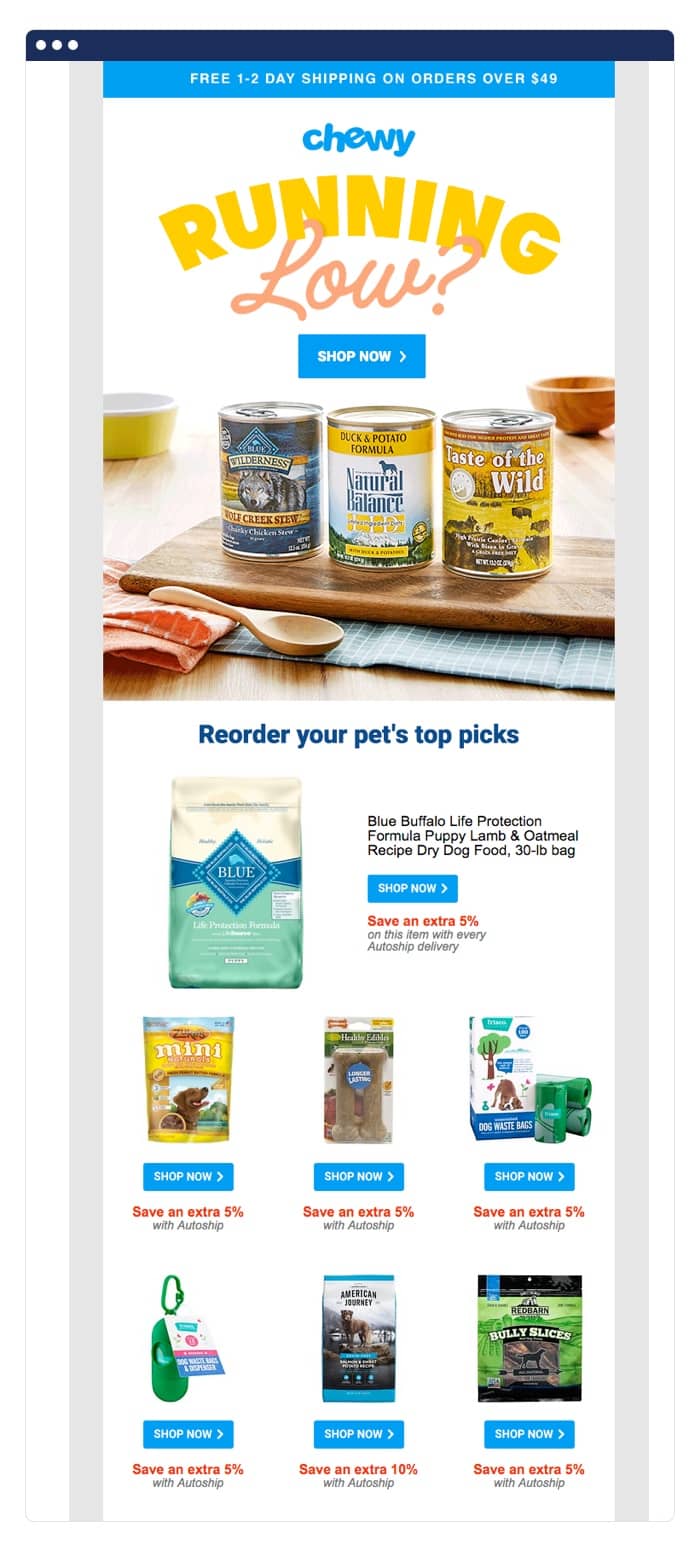
Using data about user preferences or past purchases lets you suggest products they’re more likely to be interested in. A suggestion for a product that the customer will actually use, is more likely to convert than a random selection from your lineup.
How to create a cross-sell email strategy
You’ve seen the best cross-sell email examples and templates to spark ideas, and now it’s time to create a strategy of your own. There are four steps to planning your cross-sell promotions.
Identify cross-sell opportunities
First, you need to map all of your products and features to find opportunities. To be a strong candidate for cross-selling, an item should be:
- Less expensive than the original item
- Be in a similar category or use case
- Well-reviewed and useful (after all, you want someone to be happy with the purchase)
Another example of a cross-sell item comes from WooCommerce and stroller company, Veer. The company’s primary product is a $599 stroller, so a perfect cross-sell is a $49 retractable canopy.
The add-on is less expensive but adds value to the customer’s experience.
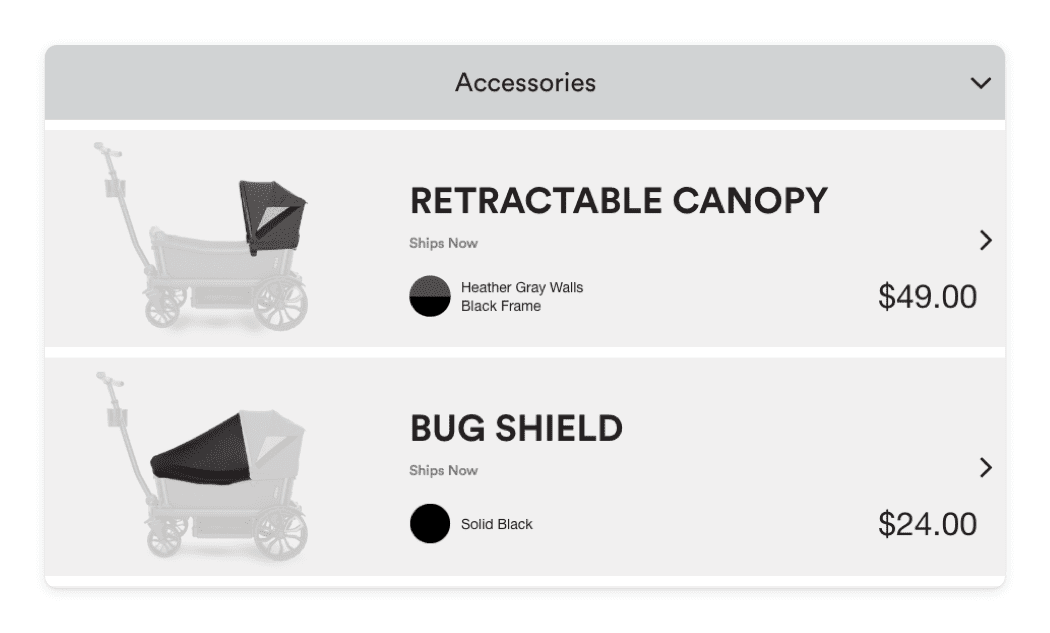
Choose target personas
After you’ve established some product links that are cross-sell opportunities, you need to decide which customers to target. To do this, familiarize yourself with your buyer personas and any psychographic segmentation data you have. Are there any segments that will benefit the most from a cross-sell?
You should also look at which items are typically purchased together, and by whom. Selling a complimentary product will be easier when you have data to show that segments are already making those decisions.
Establish the customer journey
In the first two steps, you determined the “what” and the “who.” Now, let’s decide when to introduce a cross-sell. Using the analytics on purchase behavior you referenced in the previous step, is there a particular time that your two items are often purchased together?
Some points in the customer journey that could be ideal for cross-selling include after a customer has:
- Made a purchase and left a positive review
- Purchased something in a new category, indicating a shift in interest
- Passed their typical buying frequency period
The customer journey map below shows how cross-selling and upselling are ongoing efforts that you use to expand your customer relationship.
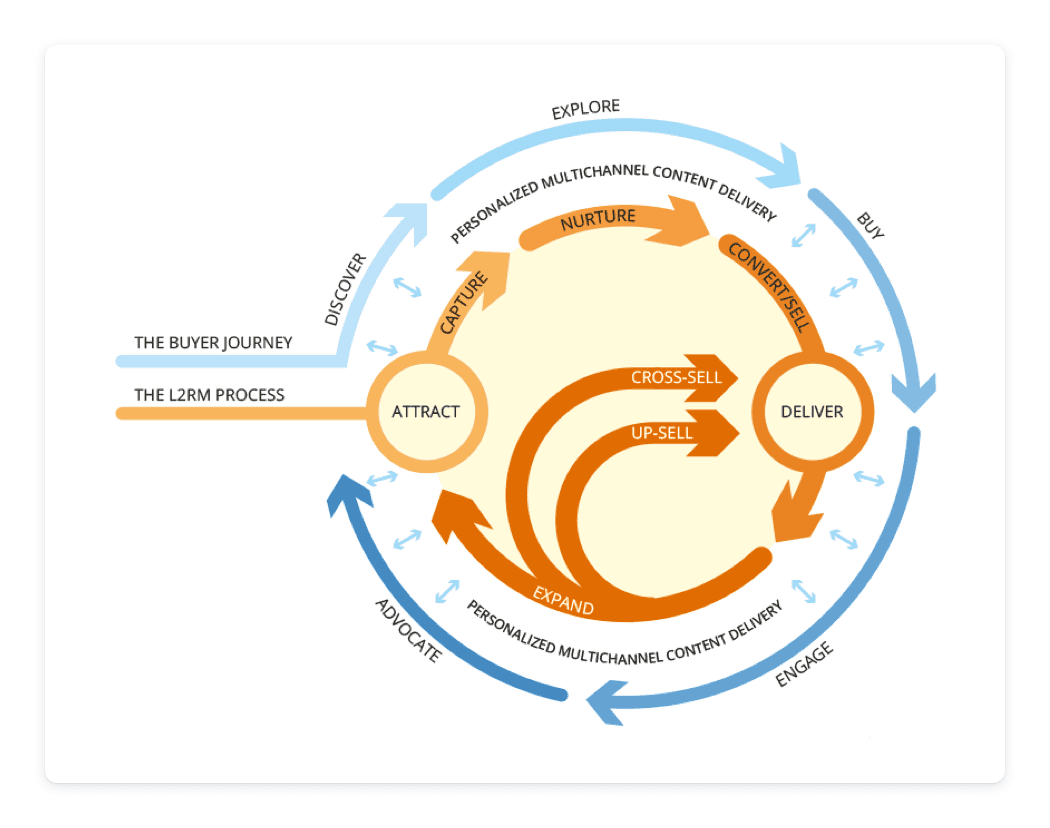
Determine your messaging and positioning
The final piece of the puzzle focuses on how you’ll present the cross-sell. Ask yourself what the benefit of the add-on product is on its own, and also in combination with the main item. Why are these a good match?
Are there use cases or benefits of the products that are particularly intriguing to specific customer personas?
Another way to boost the positioning of your cross-sell is with social proof. For example, Brandless includes a customer quote about a cross-sell product.
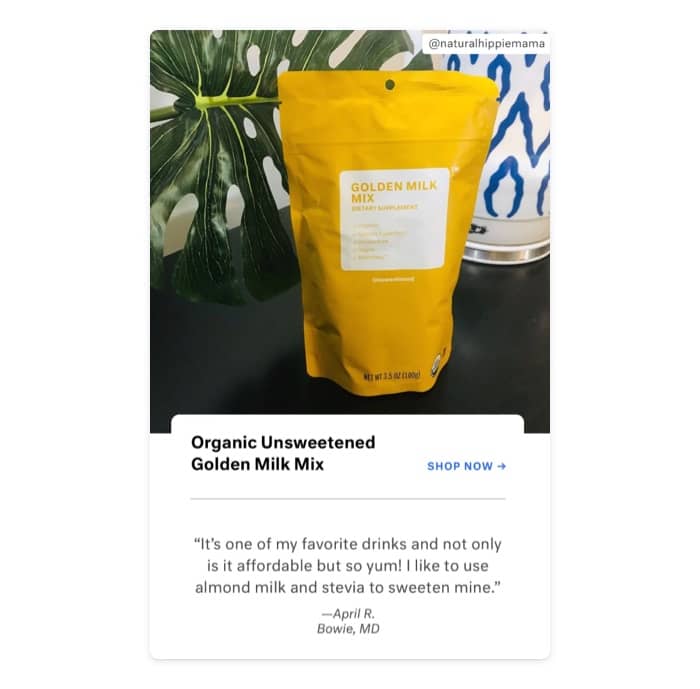
How to set up a cross-sell email automation in Vero
After creating your strategy, it’s time to get to work setting up your cross-sell marketing automation and you can do it easily in Vero. With Vero, you’ll be able to:
Design your cross-sell email with the Drag and Drop editor
While your email will fall flat without the right copy, your offer may never get the attention it deserves without an eye-catching design. If you already have templates and code snippets to work from, you can upload them to Vero to mix, match, and reuse whenever you need them with the drag and drop editor.
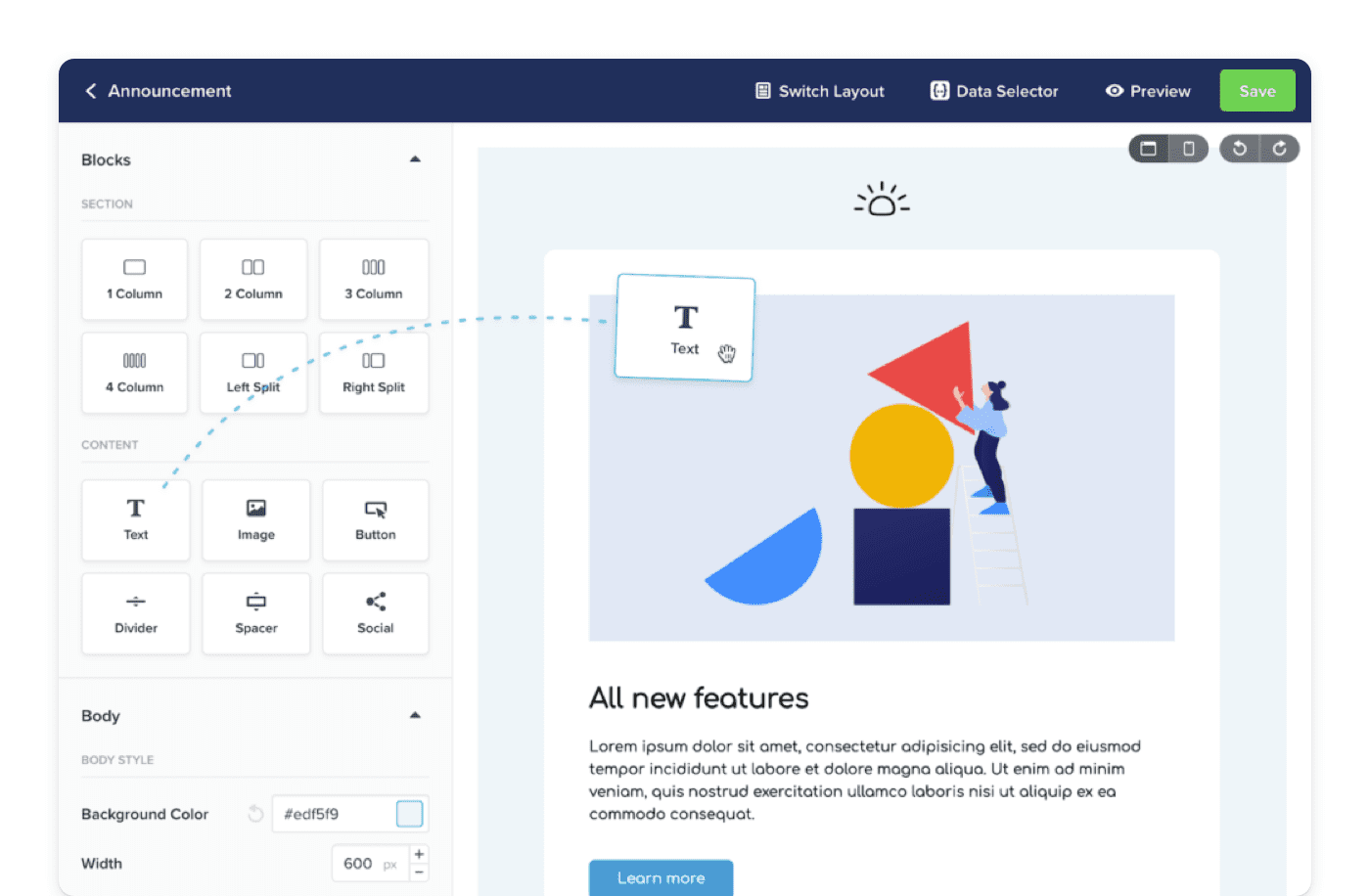
Set up event triggers for your cross-sell emails
Vero’s “Workflows” are like a visual canvas that gives you the tools to craft effective customer messaging experiences, which in this case are cross-sell emails.
With added visibility of all the logic, action steps, and email content, email marketers can choose from various logic and actions to build cross-sell email sequences – while selecting email messages and mobile push notifications.
All in one workflow. Read more about it here!
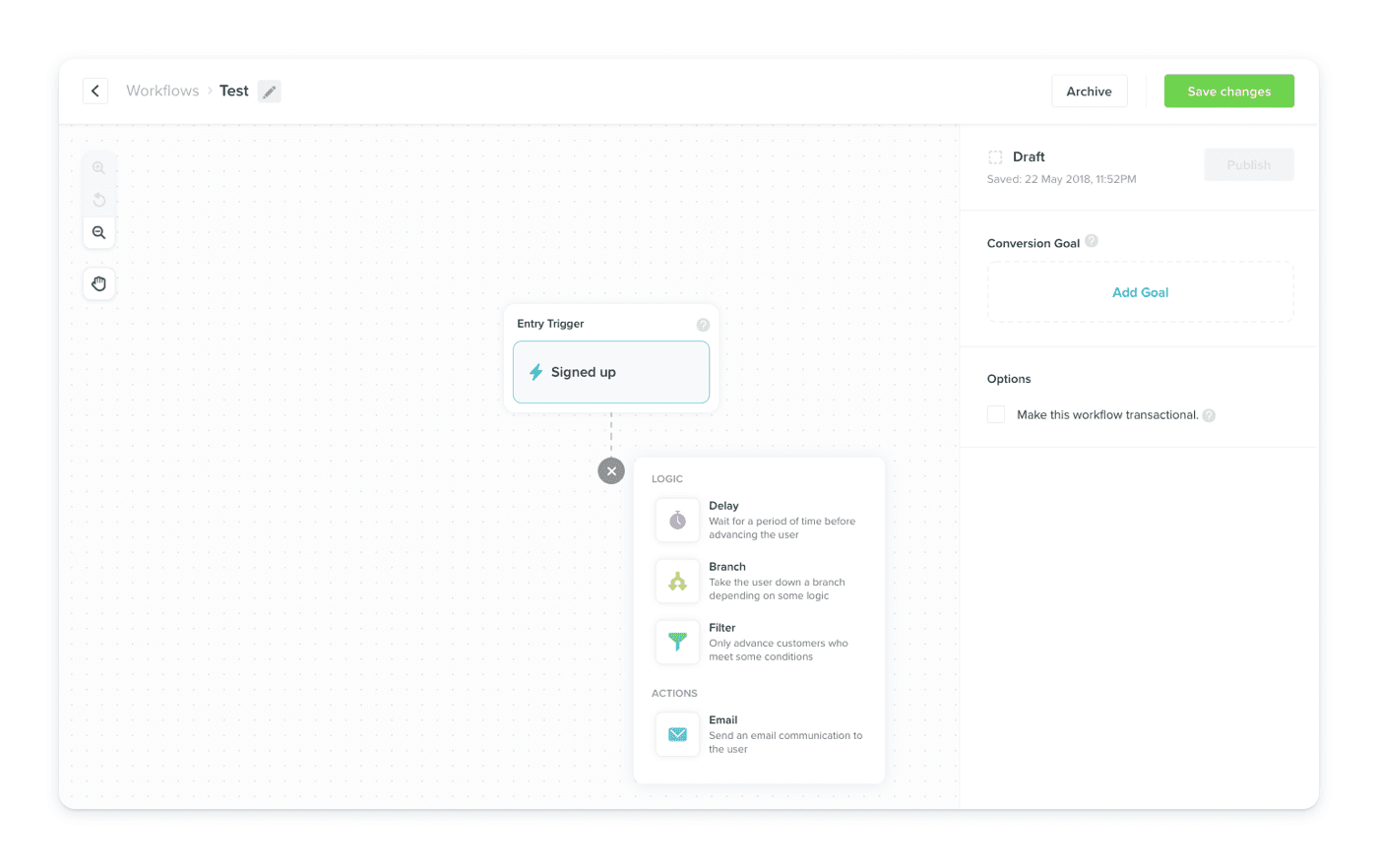
Create dynamic content with Liquid
Personalization is essential to cross-sell email creation, and Liquid offers a huge amount of flexibility when customizing messages. Liquid is an open-source language, made by Shopify, that allows dynamic content to be displayed on websites, emails, and mobile push notifications. With Liquid, users won’t have to sync additional data to their email platforms, which helps them create engaging and relevant content much faster.

